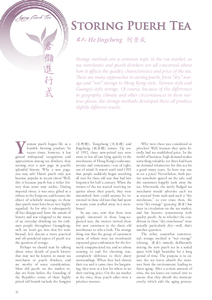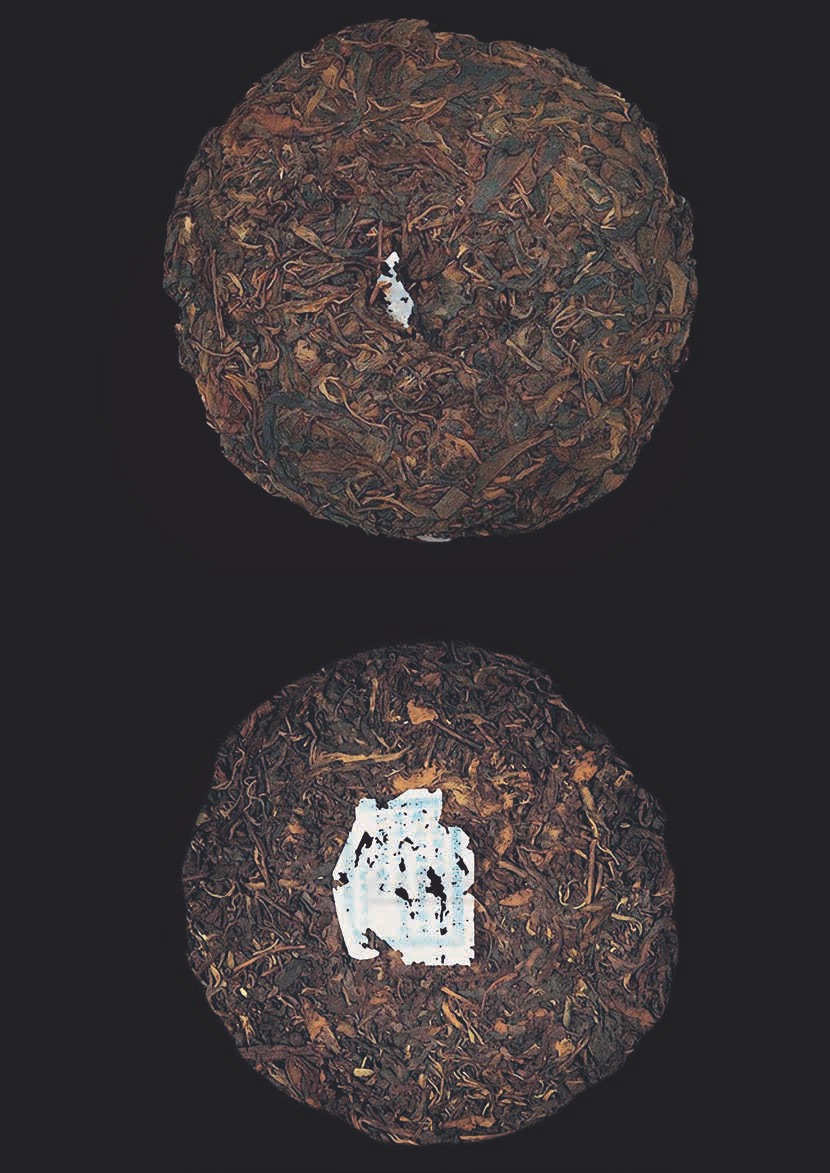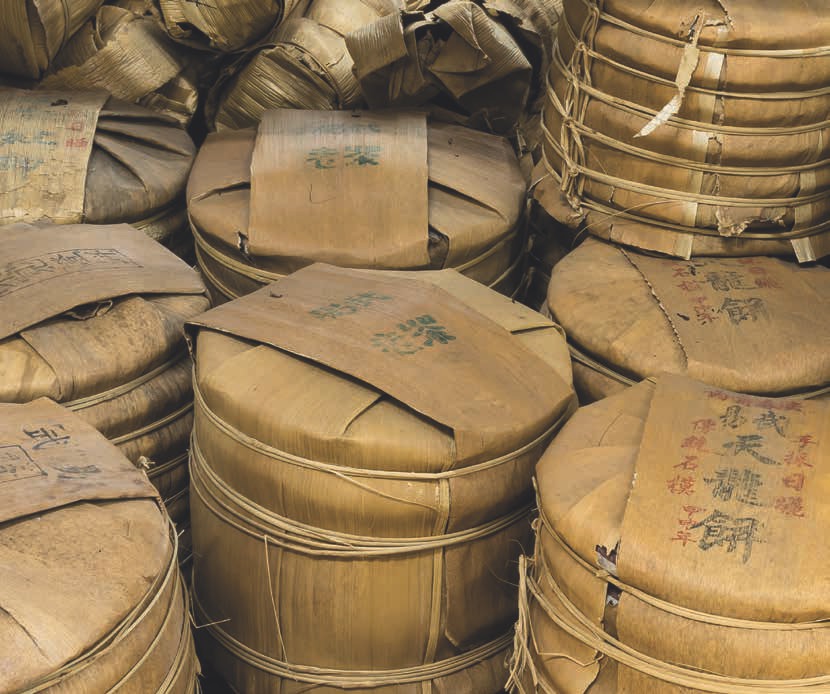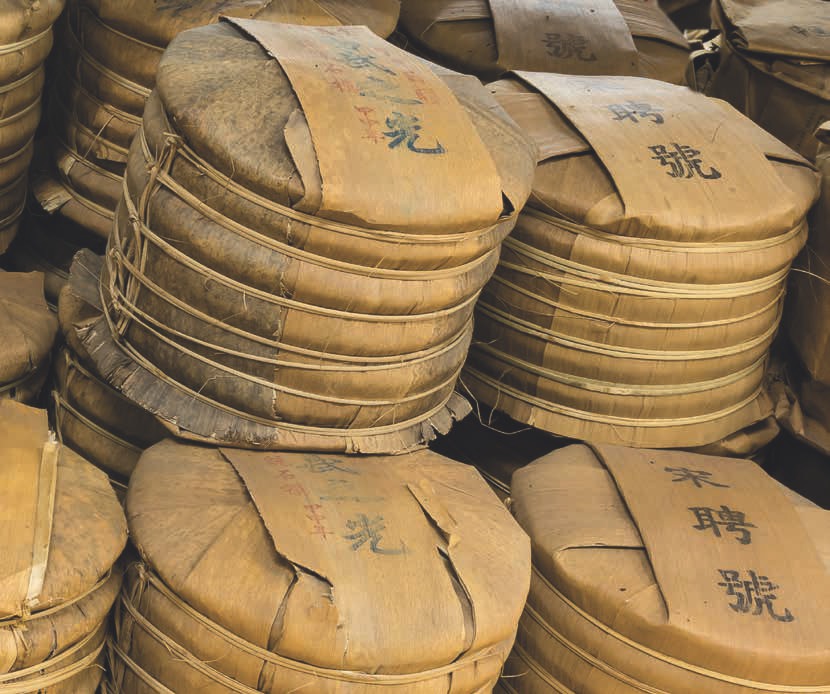
 |
|
Yunnan puerh began life as a humble farming product. In recent times, however, it has gained widespread recognition and appreciation among tea drinkers, thus turning over a new page in puerh's splendid history. Why a new page, you may ask? Hasn't puerh only just become popular in recent times? Well, this is because puerh has a richer history than some may realize. During imperial times, it was once gifted as a tribute to the Emperor, and became the object of scholarly musings; in those days puerh must have been very highly regarded. As for why it subsequently all but disappeared from the annals of history and was relegated to the status of an everyday drinking tea for ordinary people throughout Guangdong, well, we won't get into that for now. Instead, let's discuss a more practical and oft-pondered aspect of puerh tea: the question of storage.
Perhaps we should start by talking about some details of puerh history that may not be known to many tea merchants or puerh drinkers, and are worthy of some consideration. Most old puerh on the market today are from before the founding of the Republic - some of these highly prized old brands include the Songpin (宋聘號), Tongchang (同昌號) and Jingchang (敬昌號) names. Up until 1992, these now-prized teas were more or less all just lying quietly in the storehouses of Hong Kong's teahouses, taverns and restaurants - out of sight, out of mind. It wasn't until mid-1992 that people suddenly began searching all over for these old teas that had lain forgotten for half a century. When the owners of the tea started receiving inquiries about their puerh, they were astonished: how could anyone be interested in these old teas that had spent so many years stuffed away in a storehouse?
In any case, now that there were people interested in these long-neglected teas, the owners invited these few new customers to the dusty old storehouses to take a look. The strange thing was that the group of customers (none of whom were tea merchants) expressed great enthusiasm for the formerly unappreciated tea, and set about running to and fro choosing teas, completely oblivious to their dusty surroundings. When they had chosen their tea and it came time for bargaining, they were at a loss for where to set their starting price. On the tea market at the time, these puerh cakes were a priceless treasure.
Why were these teas considered so priceless? Well, because they quite literally had no established price. In the world of business, high demand makes something valuable; yet there had been no demand whatsoever for this tea for a good many years. So how was one to set a price? Nevertheless, both parties somehow agreed on the sale, and the customers happily took away the tea. Afterwards, the newly fledged tea merchants would advertise each tea as sourced from such-and-such a "dry storehouse," so ever since then, the term "dry storage" (gancang, 幹倉) has been in circulation on the tea market, and has become synonymous with quality puerh. As to whether the conditions in these "dry storehouses" were actually particulary dry - well, that's another question.
The other, somewhat controversial, storage method is "wet storage" (shicang, 濕倉); namely, deliberately storing the new puerh tea in a sealed space with high humidity for a long period of time. The purpose is to ensure the tea leaves absorb the moisture from the environment, leading to faster aging. After a certain amount of time, the tea leaves are turned over to ensure that they absorb the moisture evenly, which aids the aging process.

After around three years of this socalled "wet storage," the tea is transferred to a well-ventilated, preferably fairly dry place to be stored for a further year or so; this is commonly referred to as "removing from the storehouse" (tuicang, 退倉). This is done so that the circulating air can cleanse the tea of any moldy scents that it may have developed during the period of wet storage.
Of course, a moldy fragrance can sometimes mean that the tea has, in fact, grown mold. When the tea is stored in dry, ventilated conditions for a long enough time during this "removing from storage" stage, it's possible to get rid of almost all mold or other unintended scents. Occasionally, you might find that a tea merchant has not allowed the tea to sit out the appropriate time in ventilated storage, out of haste to sell it, resulting in a slight moldy scent still being present.
Why, then, is wet storage so controversial? The reason is that the degree of humidity is a vitally important element in the aging process of puerh tea. We can tell this by looking at samples that were aged in various different locations.

For example, you can see this difference very clearly by comparing puerh that was stored for twenty years in Kunming, Yunnan, with tea of the same vintage that was aged in Guangdong. Kunming's climate is dry throughout the year, so the tea ages very slowly; whereas, in Guangdong there's a very clear distinction between the dry and rainy seasons, and the tea shows a pleasing development after aging. So, humidity has a considerable influence on how the tea changes throughout the aging process. You could say that the window for dry-stored tea was really the past thirty years or so; now, almost all puerh teas have undergone wet storage, and those that have been purely naturally aged are as rare as phoenix feathers. These days some tea drinkers have turned their attention to seeking out high-quality puerh teas that have undergone wet storage followed by ventilated storage. In the end, the question of wet versus dry storage really comes down to individual preference.
In recent years, because people have started paying attention to this question of wet and dry storage and because the price of puerh just keeps rising, many tea drinkers have taken to seeking out puerh teas that they can age themselves to enjoy later. This is not to be discouraged, of course, but you do have to be very careful when attempting to age puerh yourself, so as not to waste all your efforts by spoiling the tea. In this spirit, the following are some recommendations to consider when storing your own tea.

Puerh discs, cakes or bricks can be simply stored as they are in their original packaging (be it box, tube or wrapping). The main considerations are to make sure the tea is not placed directly against a wall; is kept away from direct sunlight, strong odors and moisture; and is moved to a different spot every now and then. When the time comes, you'll have a lovely aged tea to drink.
Storing loose-leaf tea, on the other hand, can be a little more complicated. First of all, you must prepare a container that is clean and free of odors, such as a metal tea canister, or a porcelain or purple-sand clay jar. Next, you'll need to line the container with some material to absorb any moisture, such as the paper or bamboo leaves that are used to wrap compressed tea cakes. Lastly, put in the tea leaves, then simply put on the lid of the jar or canister - no need to seal it completely. As for where and how to store it, this is the same as the above steps for compressed tea.
I have been a drinker of puerh ever since childhood, and have slowly progressed from being completely clueless to having some small understanding of things puerh. As I see it, puerh's journey from languishing in forgotten basements to basking in the limelight that it enjoys today is thanks to a combination of its rich character and favorable circumstances. I also believe that, in choosing a puerh from the great variety available, there's really no need to overly concern ourselves with the question of wet versus dry storage. All we need to do is simply choose a tea that suits our individual taste, and then enjoy drinking it.
